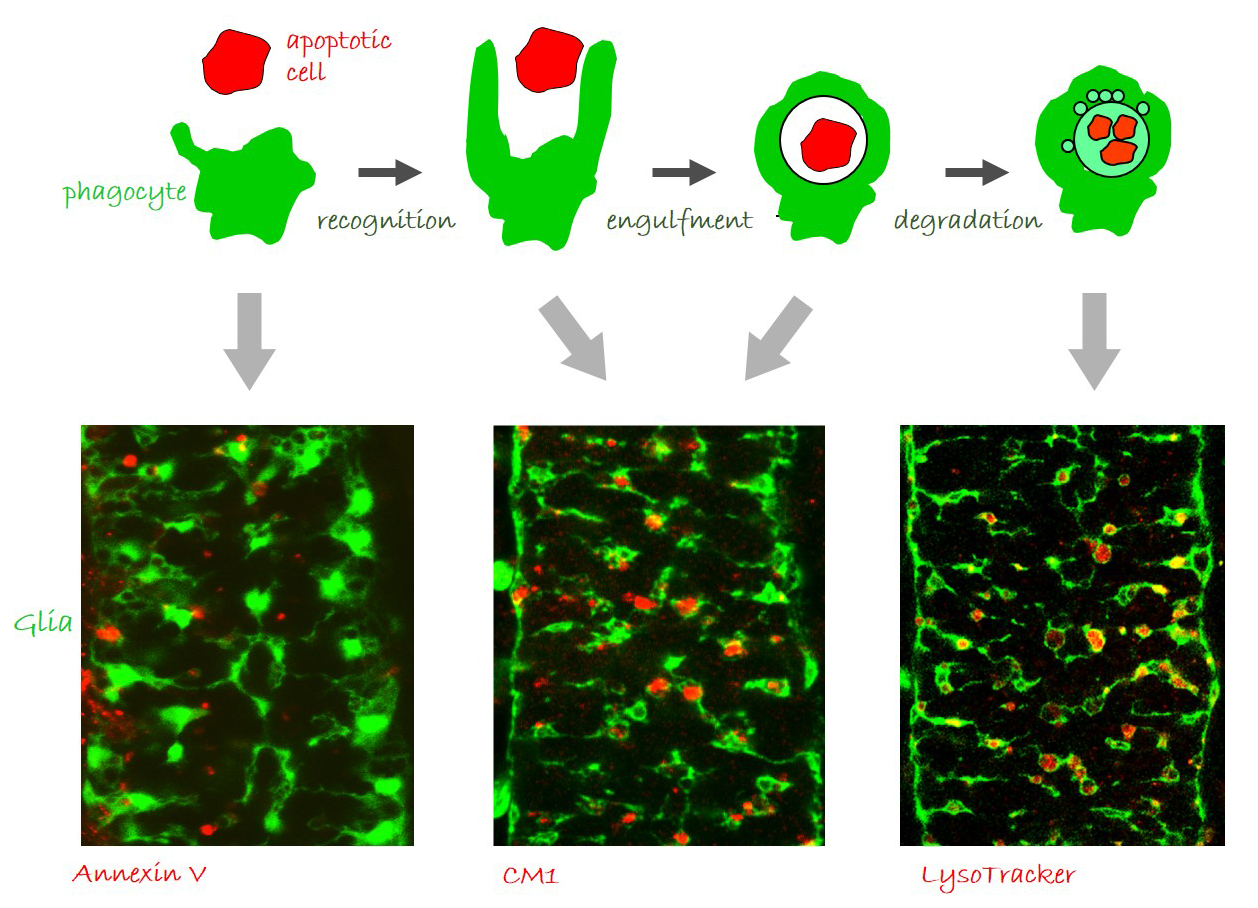Project 1
Apoptotic cell clearance during development
During normal development of multicellular organisms, a large number of cells is eliminated through apoptosis and subsequent phagocytosis by “professional” macrophages and immature dendritic cells and “non-professional” tissue neighboring cells. Drosophila phagocytic cells, professional macrophages and non-professional glia, are highly homologous, both functionally and molecularly, to their mammalian counterparts. Yet, phagocytosis in flies is less redundant than in vertebrates, which allows studying its molecular mechanisms in great detail. We use Drosophila embryogenesis and metamorphosis to study the molecular mechanisms of apoptotic cell clearance during development. Apoptotic cell clearance is a dynamic process which proceeds in four main steps: (1) recruitment of phagocytes by the apoptotic cell, (2) recognition of the cell as a target for phagocytosis, (3) engulfment of the targeted cell, and (4) phagosome maturation and degradation of the apoptotic cell. We focus on the role of transmembrane receptors, intracellular signaling and cytoskeletal rearrangements during distinct steps of the process.
Glia perform phagocytosis in the embryonic CNS.
(A) Schematic depicting the different stages of phagocytosis – apoptotic cell recognition, engulfment, phagosome formation and maturation. (B-D) Projections from confocal stacks of the embryonic CNS at stage 16, ventral view, showing GFP-labeled glia and different apoptosis/ phagocytosis markers in red: (B) Annexin V, (C) anti-activated Caspase-3 antibody, and (D) LysoTracker. Bar, 20 µm.
